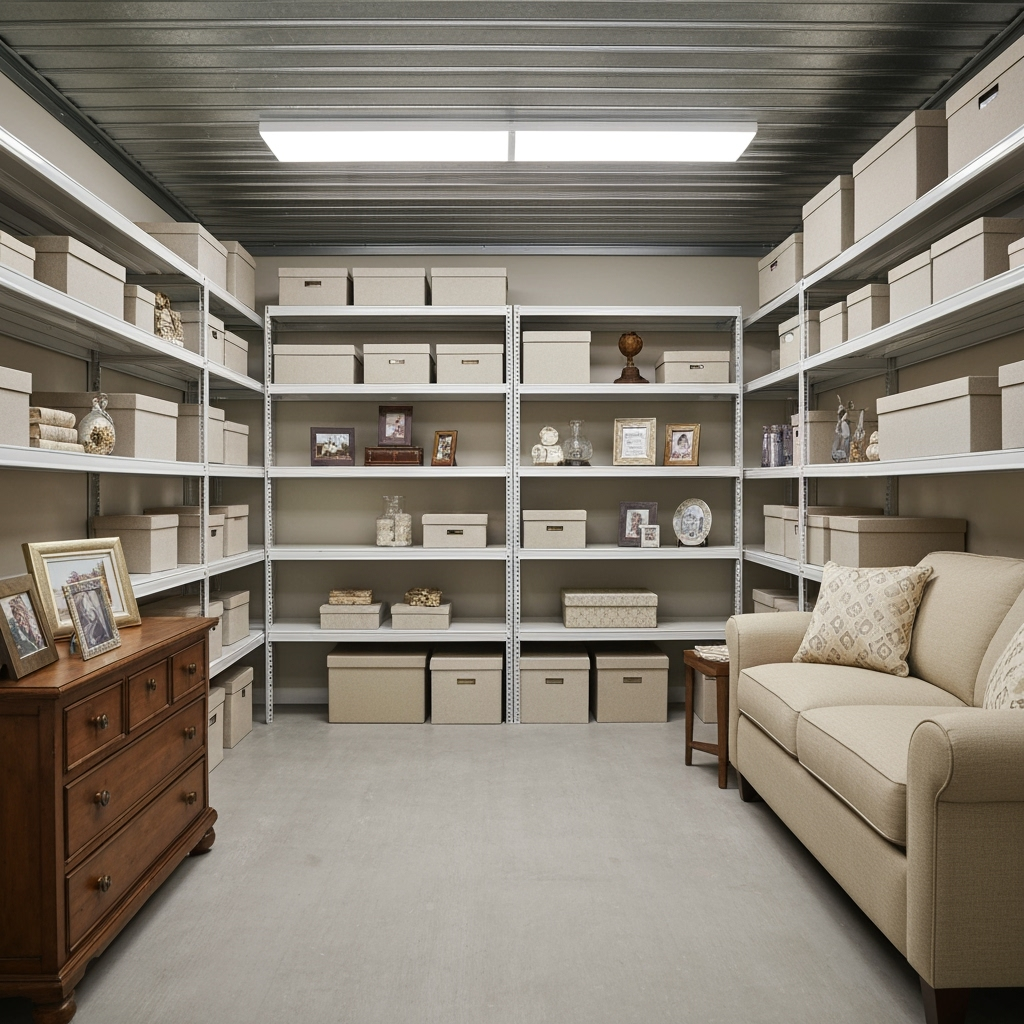
Understanding the Unique Storage Needs of Senior Transitions
Helping aging parents transition to a new living arrangement presents unique challenges, especially when it comes to preserving a lifetime of memories and valuable possessions. Climate-controlled storage offers a perfect solution for families navigating this sensitive period, providing both practical storage and peace of mind.
Why Climate-Controlled Storage is Essential for Senior Transitions
Climate-controlled storage units maintain consistent temperature and humidity levels, protecting valuable items from extreme conditions. This feature is particularly crucial for:
- Family heirlooms and antique furniture
- Photo albums and important documents
- Medical equipment and supplies
- Seasonal clothing and textiles
- Artwork and collectibles
Organizing for Accessibility and Safety

Creating an organized and accessible storage space is crucial for senior transitions. Consider these essential tips:
1. Strategic Layout Planning
- Create wide aisles for easy navigation
- Place frequently accessed items at waist height
- Use clear storage containers for easy identification
- Implement a logical organization system
2. Proper Labeling Systems
- Use large, clear print labels
- Consider color-coding for different categories
- Create a detailed inventory list
- Take photos of container contents
Protection for Valuable and Sentimental Items
When storing items with both monetary and emotional value, consider these protective measures:
- Use acid-free boxes for photographs and documents
- Wrap furniture in protective covering
- Elevate items off the floor using pallets or shelving
- Maintain proper spacing for air circulation
Managing Medical Equipment and Supplies
For seniors with medical needs, proper storage of equipment and supplies is crucial:
- Keep equipment in temperature-controlled environments
- Store supplies in airtight containers
- Maintain easy access to essential items
- Regularly check and rotate medical supplies
Timeline Management for Transitions
Create a structured timeline for the storage process:
- Early Planning (3-6 months before transition)
- Assess storage needs
- Research storage facilities
- Begin sorting items
- Active Organization (1-3 months before)
- Pack non-essential items
- Label and document everything
- Create access schedules
- Final Transition
- Move essential items to new living space
- Organize storage unit
- Document final inventory
Making Emotional Decisions Easier
The emotional aspect of downsizing and storing personal belongings can be challenging. Consider these approaches:
- Take time to sort through items together
- Document stories and memories associated with items
- Create a system for sharing family heirlooms
- Take photos of items before storage
Choosing the Right Storage Facility
Select a storage facility that offers:
- Consistent climate control
- Enhanced security features
- Easy accessibility
- Professional management
- Clean, well-maintained units
Maintaining Organization Long-Term
Establish a system for ongoing management:
- Regular visits to check on items
- Updated inventory lists
- Seasonal rotation of items
- Clear communication with family members
Final Tips for Success
Remember these key points for a successful senior storage transition:
- Take your time with the process
- Involve family members in decisions
- Keep essential documents easily accessible
- Plan for future needs
- Maintain detailed records
With proper planning and the right climate-controlled storage solution, you can help your aging parents preserve their treasured belongings while transitioning to their new living arrangement. This careful approach ensures both practical storage needs and emotional considerations are addressed, making the transition smoother for everyone involved.










Leave a Reply